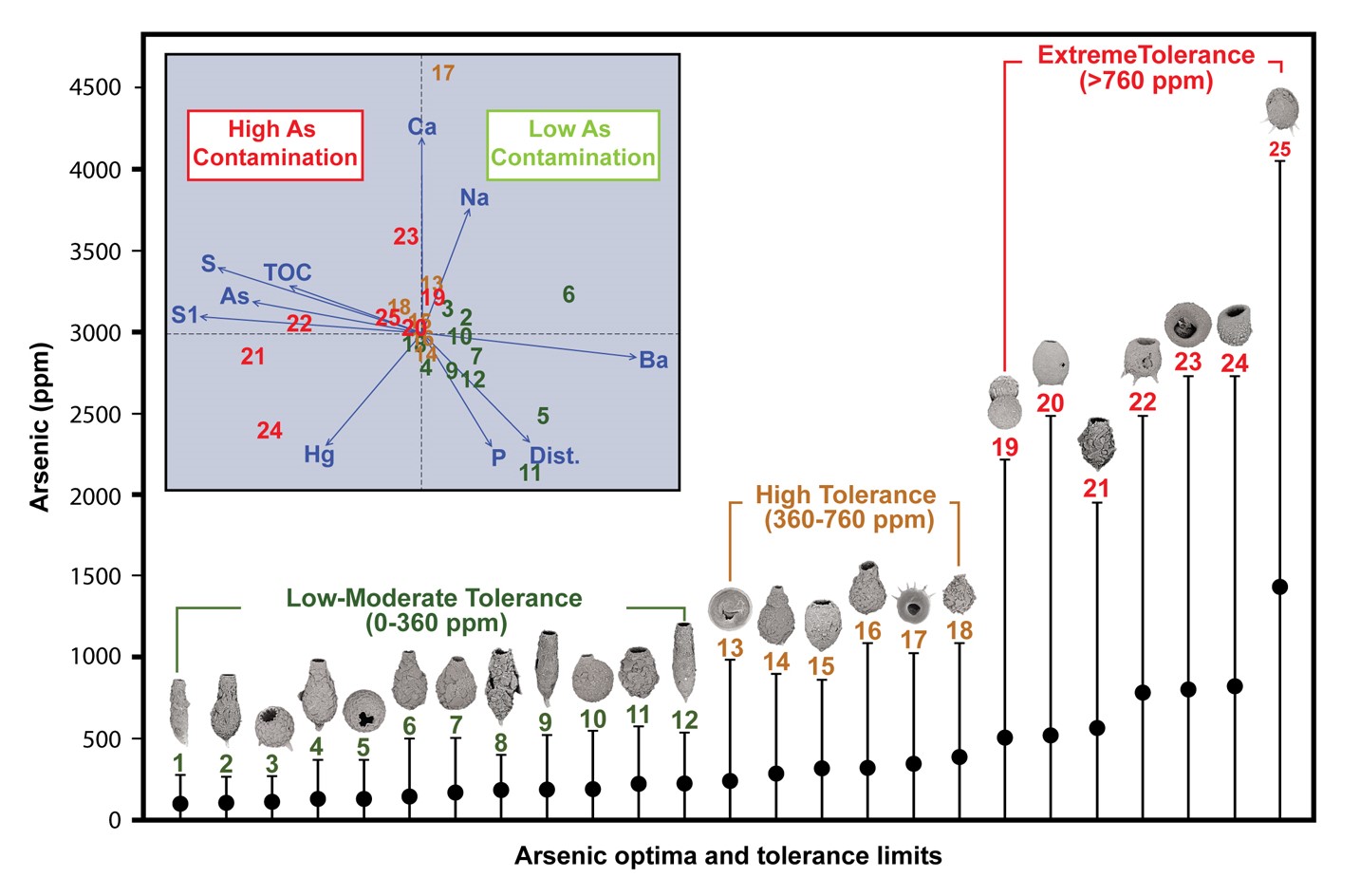Article Title: Use of Arcellinida (testate lobose amoebae) Arsenic tolerance limits as a novel tool for biomonitoring Arsenic contamination in lakes
The study presents results of a survey of 90 lakes in subarctic Canada variously contaminated by arsenic (As) as a result of legacy gold-mining, and statistically demonstrate the sensitivity and tolerance limits of Arcellinida, an important group of shelled protozoa, to various As concentrations. This survey is considered the largest of its kind to be undertaken to date and the first attempt to determine the arsenic tolerance limits of different Arcellinida species. The findings of the study show a clear relationship between Arcellinida assemblages and As concentration in near-surface lake sediments (upper 1 cm) and identify As-indicator groups through the analysis of As tolerances of individual species. The paper emphasizes the importance of Arcellinida for inferring As levels in aquatic environments, regardless of the post-depositional mobility of this redox-sensitive element. The approach used in the paper has significant potential for assessing the time-averaged impact of As on lake biota and broad implications for the management of contaminated lake ecosystems in regions where legacy As is a concern.
Photo credit: Nawaf Nsser
For the full article please click Ecological Indicators
Posted on: Wednesday, February 26, 2020